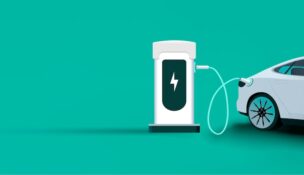Sports biz: the big fix
Stewart Schley //October 1, 2010//
If you watched television in the 1970s, you may recall it cost $6 million to rebuild the body of astronaut Steve Austin, TV’s bionic man.
So the few thousand it’ll cost you to repair that mash of meniscus in your knee should sound like a serious bargain. And you won’t need machine-tooled implants or a 20-to-1 infrared zoom lens fitted into the hole where your eye used to be.
All it takes is a few drops of a DNA brew drawn from your own body. And the steady hand of a Broomfield physician who is doing to professional athletes and weekend warriors the same thing a shadowy arm of the U.S. government did to Steve Austin in “The Six Million Dollar Man.”
He’s rebuilding them. Better. Stronger. Faster. And without ever touching a scalpel.
t’s called the Regenexx-SD Procedure. Dr. Christopher Centeno is a partner in the Centeno-Schultz Integrative Pain Management Clinic in Broomfield, and on a recent Friday morning, dressed in blue scrubs, he’s explaining how it works.
The CliffsNotes version is this: Centeno uses a needle to withdraw a small amount of marrow from a bone near your hip. He gives the red, fatty fluid to a technician who mixes it with a lab-prepared blend of factors that makes the stem cells contained in the fluid grow rapidly. Later that day, the fluid is injected into the area of injury. Almost immediately, the stem cells drawn from your bone marrow look around for something useful to do. Depending on the local chemical environment and the type of cells they attach to, they’ll end up becoming new cartilage or muscle tissue, replenishing and rebuilding what’s already there.
“These cells are the body’s maintenance men,” Centeno says.
It’s similar to what happens when you break down muscle tissue by grinding through one last set of curls at the gym. Keep it up, and you’ll find your body produces bigger, stronger muscles. Over time, though, the body stops producing enough stem cells to get the job done. That’s where Centeno comes in. He’s taking a known chemical process and enhancing it by optimizing stem cells to be better at what they do.
For the 500 or so patients who have had the procedure performed at Centeno’s clinic, there are two big advantages: First, it means avoiding invasive surgery that may leave you with a knee that’s a poor shadow of its former darting, swaggering self. Second, because the healing cells are drawn from your own body, there’s almost no chance you’ll reject them.
Not every weekend athlete with a torn cartilage is an ideal candidate. But for some, the procedure can seem like an unbelievable gift.
Adam Kahn is one of them. The 47-year-old owner of Lakewood’s Meadow Creek Tennis Club tore the medial meniscus in his knee 2½ years ago while playing squash. The prognosis from a surgeon: grim. “He basically said, ‘Your knee is never going to be the same.’ I left his office pretty depressed,” Kahn says.
But when a tennis acquaintance mentioned Centeno’s clinic, Kahn was intrigued. He read about the procedure. He talked to five patients who’d had it. And then three weeks after Centeno squirted a stem cell cocktail into Kahn’s knee, something remarkable happened.
“I had changed the way I got into bed at night,” Kahn says. “I couldn’t bend my knee to slide into the bed. And one evening I just started to climb into bed the old normal way. It scared me. But it didn’t hurt.”
Kahn’s knee continued to improve, returning to nearly 100 percent of its capability within four months of the procedure. But in January, he re-injured it, again on the squash court. Four months later, he returned for a second procedure, having elected to freeze some cells from the original withdrawal. By August, he was back on the tennis court. (Although he’s given up squash.)
Centeno sees big things ahead for stem cell therapy as an alternative to invasive surgery. He’s convinced the day will come when promising young athletes freeze their cells for possible repairs later in their careers. Until then, he’s content to help athletes recover from injuries with the greatest medicine of all: their own genetic material.
You’ve got to think Steve Austin would dig that.
{pagebreak:Page 1}

























